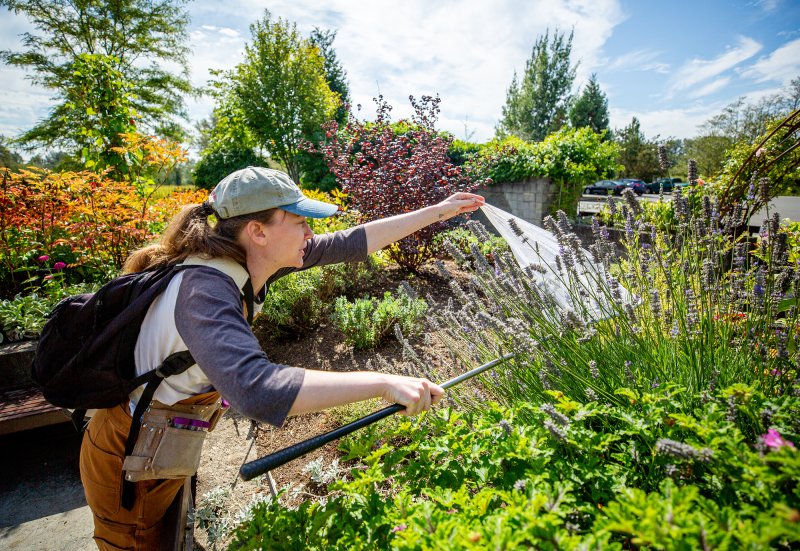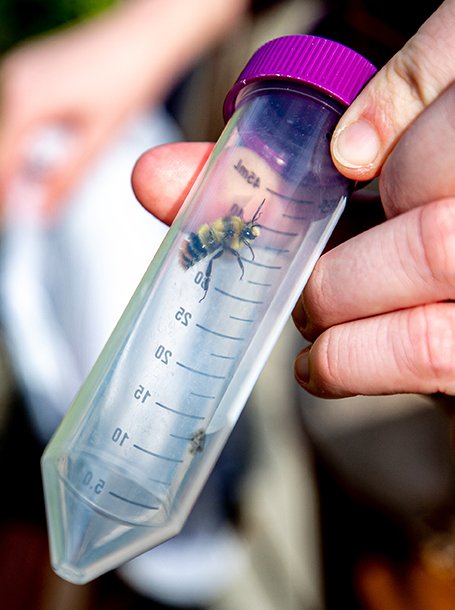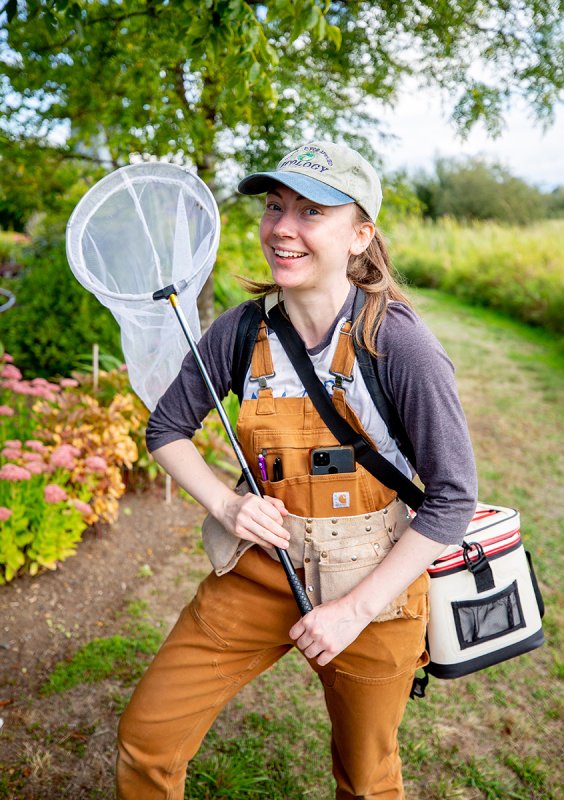All the Buzz: WWU students researching regional bumble bee populations
Twice a month from March through September, WWU graduate student Annie Jolliff and a handful of other students and volunteers met in the lobby of the Biology Building for a bumble bee hunt.
They were heading out to count and categorize bumbles in the region’s lowlands for Jolliff’s biology master’s thesis – and to help establish a baseline for keeping track of future population changes among lowland bumble bees.
Bee population surveys are more often done in mountainous, alpine regions since they tend to have higher bumble bee diversity, says Jolliff, whose research is primarily funded by a $20,000 grant from Seattle City Light.
But lowland bumble bees are vital to local pollination: They are able to fly in cooler temperatures and lower light conditions than honeybees, so they have an oversized role in jump-starting the pollination of early crops and native plants, especially in the cooler days of spring.
Jolliff and their group stalked bees in several locations throughout Whatcom and Skagit county lowlands.
“Each (research) site has little areas, and we use a random number generator to divide them up,” Jolliff says.
The group had sites on WWU’s Bellingham campus – such as the Outback Farm or in the plants surrounding Old Main – as well as sites in Lake Whatcom Park and South Fork Park in Whatcom County, Discovery Garden near Mount Vernon, and more.
At each of these sites, Jolliff and their fellow students started a timer and try to catch as many bees as they could within a set amount of time.
“Once we have a bee in the net, we secure the net and pause the timer. Then we put the bees in a tube and then into a cooler. We will usually also take a picture of the cap of the tube that’s got our initials and a letter indicating what flower we caught it on,” Jolliff says. “After the timer is up, we take them out of the coolers and take photos of them.”
Putting the bees into a cooler makes them fall asleep and puts them into a “mini hibernation,” Jolliff says. They add that the typical practice for other pollinator surveys is lethal sampling, which is especially unfortunate when the bee species being surveyed are at risk of extinction.
“There are a bunch of different species. Some of them are super obviously different and some of them are very, very similar,” Jolliff says. “So we have to take close-up pictures of them so that we can identify them.”
Jolliff’s research overlaps with the work of Audrey Mechtenberg, ’21, B.S., environmental science, who two years earlier had rediscovered the native western bumble bee on Western’s campus during her senior project; the western bumble bee was thought to be locally extinct in the area. In the span of four months, Mechtenberg recorded six total sightings of the insect on campus, igniting hope for the local reemergence of the species.
Jolliff and their group are looking at whether native bumble bees, including the rare western bumble, face negative influence or competition from the invasive eastern bumble bee, which is not native to Washington state.
“Through distributional and phenological overlap, are they in the same places? Are we seeing native bumble bees at the same time as we are seeing the eastern bumble bee?” Jolliff says.
One of the biggest indicators identifying an eastern bumble bee versus a western bumble bee is the western bumble bee’s white tail or bottom.
Over the summer, the group saw several eastern bumble bees, including several female workers, male drones of the species, as well as queens at a handful of sites.
They also saw a good sampling of native bumble bees, including the California bumble, which is "supposedly rare and possibly in decline, but was abundant at several sites" Joliff says. They also spotted the Vancouver bumble bee, appearing to thrive at the site on Lummi Island, and lots of the Red-Belted bumble bee, which is fairly common locally, Jolliff says, but records are scarce.
Jolliff begins analyzing the group’s findings this fall, looking at which species populate each area and what this means for the future of certain insects.
Nina Claflin , ’23, B.A, journalism – public relations, is a former intern with Western’s Office of University Communications who now works at the Cascadia Daily News in Bellingham.
WWU photos by Luke Hollister


